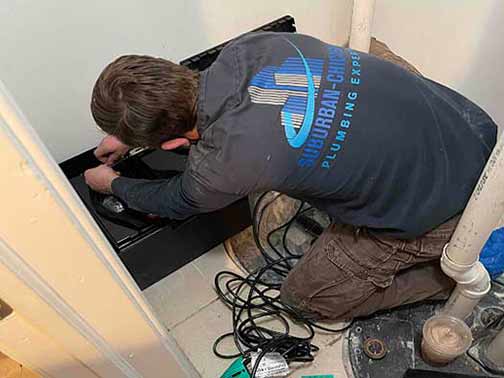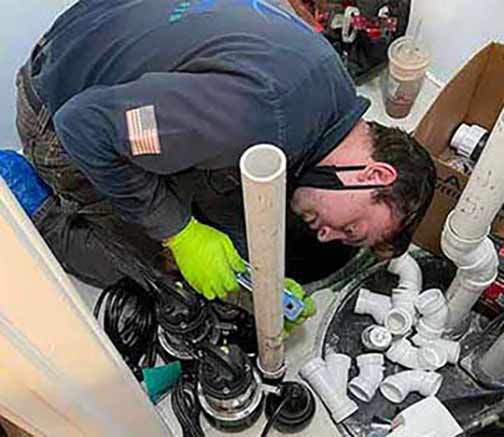Understanding the Role of a Sump Pump in Your Home
A sump pump is a crucial component in preventing basement flooding. It helps to remove water that accumulates in a sump basin, usually found in the basement of homes. The primary function of a sump pump is to pump out water that has entered the basement, keeping it dry and preventing water damage. Sump pumps are particularly important in areas prone to heavy rainfall or with high water tables. By effectively managing water intrusion, sump pumps safeguard your property from potential structural damage and mold growth, ensuring a healthier living environment.
Additionally, sump pumps play a vital role in maintaining the integrity of your home’s foundation. Excessive water accumulation can lead to soil erosion and foundation weakening, which can result in costly repairs. By efficiently removing water, sump pumps help to preserve the stability and longevity of your home’s foundation. This makes them an indispensable asset for homeowners, especially those living in regions with high precipitation or near bodies of water.
Signs Your Sump Pump Needs Replacement
There are several indicators that your sump pump may need replacement. These include strange noises, constant running, irregular cycling, visible rust, and frequent power outages. If you notice any of these signs, it may be time to consider replacing your sump pump to ensure your basement remains dry and protected. Strange noises, such as grinding or rattling, can indicate mechanical issues or worn-out components. Constant running or irregular cycling may suggest a malfunctioning float switch or an undersized pump struggling to keep up with water inflow.
Visible rust on the pump can lead to clogs and reduced efficiency, while frequent power outages may point to electrical problems or an aging pump that is no longer reliable. Additionally, if your sump pump is over ten years old, it may be nearing the end of its lifespan and should be evaluated for replacement. Addressing these signs promptly can prevent potential water damage and ensure the continued protection of your home.
The Risks of DIY Sump Pump Replacement
While it may be tempting to replace your sump pump on your own, there are several risks associated with DIY replacement. These include potential electrical hazards, improper installation, voiding warranties, and the possibility of not addressing underlying issues. Hiring a professional ensures that the replacement is done correctly and safely. Electrical hazards can arise from improper wiring or connections, posing a risk of shock or fire. Improper installation can lead to pump failure, water damage, and costly repairs.
Additionally, attempting DIY replacement may void any existing warranties on the pump or related components, leaving you responsible for future repairs or replacements. Professionals have the expertise to identify and address underlying issues, such as drainage problems or foundation cracks, that may be contributing to sump pump failure. By hiring a professional, you can avoid these risks and ensure the job is done right the first time.
Benefits of Hiring a Professional for Sump Pump Replacement
There are numerous benefits to hiring a professional for sump pump replacement. Professionals have the expertise and experience to properly install the pump, ensuring it operates efficiently. They can also identify and address any underlying issues that may be causing sump pump failure. Additionally, hiring a licensed plumber provides peace of mind, knowing that the job is done correctly. Professionals are equipped with the necessary tools and knowledge to handle complex installations and troubleshoot any problems that may arise.
Furthermore, professionals can offer valuable advice on selecting the right type of sump pump for your specific needs and provide guidance on maintenance practices to extend the pump’s lifespan. They can also ensure compliance with local building codes and regulations, preventing potential legal issues. By entrusting the replacement to a professional, you can save time, reduce stress, and protect your investment in your home.

Choosing the Right Professional for Your Sump Pump Replacement
When selecting a professional for your sump pump replacement, it’s important to consider their experience, reputation, and credentials. Look for professionals who are licensed, insured, and have positive reviews from previous clients. It’s also a good idea to get multiple quotes to ensure you’re getting a fair price for the service. Experienced professionals are more likely to provide high-quality workmanship and reliable service, minimizing the risk of future issues.
Reputation is another key factor to consider. Check online reviews, ask for references, and seek recommendations from friends or family to find a trusted professional. Credentials, such as certifications and affiliations with industry organizations, can also indicate a professional’s commitment to maintaining high standards and staying updated with the latest industry practices. By thoroughly vetting potential professionals, you can make an informed decision and choose the best candidate for the job.
Cost Considerations for Professional Sump Pump Replacement
The cost of professional sump pump replacement can vary depending on factors such as the type of pump, the complexity of the installation, and the professional’s rates. On average, homeowners can expect to pay between $500 and $1,200 for professional sump pump replacement. While this may seem like a significant investment, it’s important to consider the long-term benefits and protection it provides for your home. The type of pump, whether submersible or pedestal, and its horsepower can influence the overall cost.
Complex installations, such as those requiring additional plumbing or electrical work, may also increase the price. However, investing in professional replacement can prevent costly water damage and repairs in the future. Additionally, some professionals may offer warranties or maintenance plans, providing added value and peace of mind. By weighing the costs against the benefits, homeowners can make an informed decision that best suits their needs and budget.
Maintenance Tips to Extend the Life of Your Sump Pump
Regular maintenance is key to extending the life of your sump pump. This includes checking the pump and basin for debris, testing the pump periodically, ensuring the discharge line is clear, and having the pump inspected by a professional annually. By following these maintenance tips, you can help ensure your sump pump operates efficiently and lasts longer. Regularly cleaning the pump and basin out for debris, such as dirt, gravel, or small objects, can prevent clogs and ensure smooth operation.
Testing the pump periodically by pouring water into the basin can help verify that it activates and pumps water correctly. Ensuring the discharge line is clear and free of obstructions, such as ice or debris, allows for proper water flow and prevents backups. Additionally, scheduling annual inspections with a professional can help identify and address any potential issues before they become major problems. By adhering to these maintenance practices, homeowners can maximize the lifespan and performance of their sump pump.
Frequently Asked Questions About Sump Pump Replacement
Homeowners often have questions about sump pump replacement. Common questions include how long sump pumps typically last, what types of sump pumps are available, and whether a backup pump is necessary. Providing answers to these questions can help homeowners make informed decisions about their sump pump replacement. Sump pumps typically last between 7 to 10 years, depending on factors such as usage, maintenance, and the quality of the pump.
There are two main types of sump pumps: submersible and pedestal. Submersible pumps are installed below the water level in the sump basin, offering quiet operation and efficiency, while pedestal pumps are mounted above the basin, making them easier to access for maintenance. A backup pump, either battery-operated or water-powered, is recommended to provide additional protection in case of primary pump failure or power outages. By understanding these aspects, homeowners can make well-informed decisions regarding their sump pump replacement needs.


